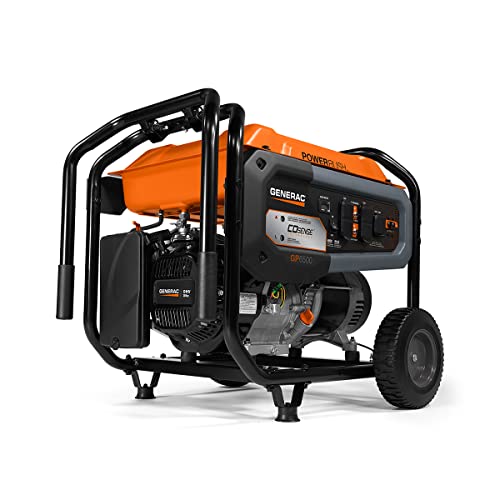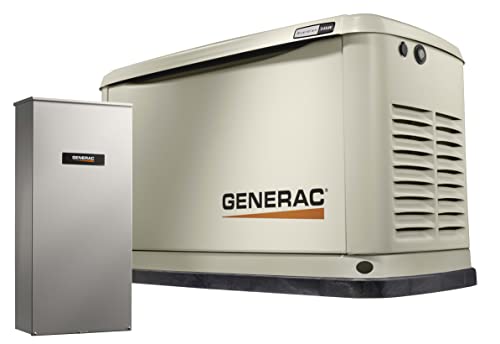In today’s world, where uninterrupted power supply is vital for various applications, generators have become indispensable. They offer a reliable solution during power outages, outdoor events, construction sites, and other scenarios where access to the grid is limited. Among the different types of generators available, portable and stationary generators stand out as popular choices. In this article, we will explore the key differences between portable generators and stationary generators, including their features, applications, benefits, and limitations.
Definition and Mobility
The primary distinction between portable and stationary generators lies in their mobility. A portable generator is designed for easy transportation, typically equipped with wheels and handles for convenient movement from one location to another. These generators are smaller and lighter, making them suitable for camping, tailgating, and outdoor events.
On the other hand, stationary generators, as the name suggests, are fixed in place and permanently installed. They are commonly used for providing backup power to homes, businesses, hospitals, and other critical facilities. Stationary generators are larger, heavier, and require professional installation.

👉👉8000 Watt Generac-GP8000E Generator ( Click here to see price )
Power Output and Capacity
Portable generators are available in a wide range of power outputs, from a few hundred watts to several thousand watts. They are ideal for powering small electronic devices, lights, fans, and essential appliances during emergencies. Due to their limited size, they may not be able to handle high-power demands or run heavy-duty equipment for an extended period.
In contrast, stationary generators boast significantly higher power capacities, ranging from several kilowatts to megawatts. They are designed to provide ample power for entire buildings or large operations during prolonged blackouts. These generators can handle heavy loads, including air conditioning systems, heating units, refrigerators, and commercial machinery.
Fuel Source
Portable generators commonly run on gasoline, propane, or diesel. The use of different fuels provides flexibility and convenience, as users can choose the most readily available option based on their location and preference. However, it’s essential to store fuel safely and ensure an adequate supply during extended power outages.
Stationary generators, due to their larger size and fixed location, often run on natural gas or liquid propane. These fuel sources are more convenient for continuous operation, as they can be connected directly to existing gas lines or propane tanks. This eliminates the need for refueling and ensures a constant power supply during extended emergencies.
Applications
Portable generators excel in situations where mobility and versatility are crucial. They are popular choices for camping trips, tailgating parties, outdoor festivals, and recreational vehicles (RVs). Additionally, homeowners may use them as temporary backup power sources during short outages.
Stationary generators, with their high power output and continuous operation, are tailored for critical applications. They serve as dependable backup power solutions for homes, hospitals, data centers, and commercial buildings. During extended power disruptions, these generators can maintain essential services and prevent costly disruptions.
Installation and Use
The installation process for portable generators is straightforward and typically user-friendly. Users only need to follow the manufacturer’s guidelines for safe operation. Portable generators can be started manually or through an electric start button, depending on the model. The ease of use makes them accessible to a wide range of users, including homeowners, outdoor enthusiasts, and small business owners.
Stationary generators, due to their higher power output and complex installation requirements, demand professional setup. Electricians or generator specialists must integrate these units with the building’s electrical system to ensure a seamless transfer of power during outages. Once installed, they can be configured to activate automatically when the main power supply fails.
Noise and Emissions
Portable generators are generally noisier compared to stationary generators, especially when operating at higher loads. Their smaller engines and less sophisticated noise-reduction features contribute to the louder sound. However, advancements in technology have led to the development of quieter portable generator models.
Stationary generators, designed for quiet and continuous operation, are equipped with better soundproofing features and larger mufflers. These generators are strategically positioned away from living areas to minimize noise disturbance.
In terms of emissions, both types of generators produce exhaust gases during operation. Portable generators typically emit higher levels of pollutants due to their smaller engines. Stationary generators are subject to stricter emissions regulations and often incorporate advanced emission control technologies, making them more environmentally friendly.

👉👉Stationary Generator/Standby Generator (Guardian 24kW Home Standby Generator, Click here to see price)
Cost Considerations
Portable generators are generally more affordable than stationary generators. Their smaller size, simpler construction, and lower power output contribute to their cost-effectiveness. Prices for portable generators can range from a few hundred to a few thousand dollars, depending on the brand, power output, and features.
Stationary generators, with their larger capacity and professional installation requirements, come with a higher upfront cost. The price of a stationary generator can range from several thousand to tens of thousands of dollars, depending on the power capacity and installation complexity.
Conclusion
In summary, both portable generators and stationary generators serve critical roles in providing backup power solutions for various applications. Portable generators offer flexibility, mobility, and affordability, making them ideal for recreational use and short-term emergency power needs. Stationary generators, with their high power output, continuous operation, and professional installation, are essential for providing backup power to critical facilities during extended power outages.
When selecting the right generator for your needs, consider factors such as power requirements, mobility, fuel source, and installation complexity. Understanding the differences between these two types of generators will help you make an informed decision and ensure uninterrupted power supply in times of need.

